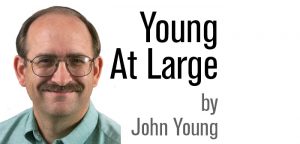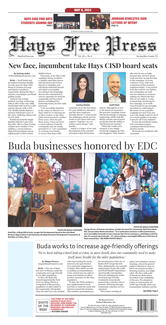By John Young
“No new taxes.” Ah, the sound of spring preening when lawmakers recess.
Despite these claims, it’s amazing how policymakers in “low-tax” states figure out ways to convince voters of their presumed fiscal sainthood.
Often, they do so with revenue devices which don’t impact the many but really sock it to a few.
Yes, we speak of user taxes, particularly “sin taxes.” They are tried and true, and too rarely challenged on the basis of fairness. The same goes for state lotteries, which sock it to the saddest of our sad sacks.
However, the taxing of smokes, booze and other vices is too obvious among the guilty pleasures of today’s fiscal disservatives – emphasis on “guilty.”
Instead, consider the user taxes attached to two things a truly just society would promote: health care and higher education.
Let’s flip a coin and choose one. (No wagering, please.)
It’s heads for health care — and some amazing news that is hardly getting play anywhere, certainly not Fox News: The Kaiser Family Foundation reports dramatic drops in the numbers of uninsured patients showing up at the nation’s “safety net” hospitals.
In Seattle, Harborview Medical Center’s proportion of uninsured patients dropped from 12 percent last year to 2 percent this year. This represents a revenue boost of $20 million.
In northern Colorado, Poudre Valley Medical Center and McKee Medical Center saw a cumulative drop of $24.6 million in charity medical care from 2012 to 2013.
Colorado and Washington are among the states that expanded Medicaid under the Affordable Care Act.
In those states that refused to expand Medicaid? Hospitals continue to absorb the cost of caring for the uninsured. Guess who pays for that? Everyone who otherwise uses the services of those hospitals.
Yes: a crushing user tax.
The Urban Institute attached a price tag of $45 billion to caring for the uninsured in 2013. But if $45 billion were the sum of it, maybe we could ignore it. (Write it off; you know, like the costs of waging two wars at once.)
However, here’s something we cannot ignore: People covered by Medicaid or through subsidized ACA policies get ahead of their health-care needs with primary care visits, prescriptions and preventive care. This means fewer costly ER catastrophes that hospitals have to eat.
Policymakers who have resisted the ACA say they are concerned about costs. With their actions, they really aren’t concerned about the costs that visit everyone who needs hospitalization. Indeed, they have no answer whatsoever.
As advertised, this is just one of two punitive user taxes penalizing things we ought to incentivize. The other thing is college education.
The debt load heaped upon today’s and tomorrow’s college graduates is a monstrosity. From kindergarten through Grade 12 they were advised that they cannot survive without a college diploma. Then they emerge with that diploma and haul with them a crushing financial burden – this into an uncertain job market.
We want to blame the colleges for the costs that have made slaves of their graduates. While much can and should be said about those costs (including the criminal syndicate known as textbook publishing), it is unfair to let blue-sky lawmakers off the hook – they who verily flung off their loafers in the rush to cut funding of higher education over the last 20 years. What collegians are paying, with their mountainous debt, is a tax owed to a “no new taxes” environment. They are experiencing the fruits of fiscal disservatism and low-low tax charlatanism.
While lawmakers were afraid to spread the tax burden among all taxpayers to better support higher education, they had no compunction about dumping on these young people who have scrimped, saved, and studied to achieve what society urged: Get yourselves educated.
Well, here they are, knowing they, like Americans’ remaining uninsured, are the ones to pay for the sins of presumed fiscal saints.
Longtime Texas newspaperman John Young lives in Colorado.
jyoungcolumn@gmail.com






